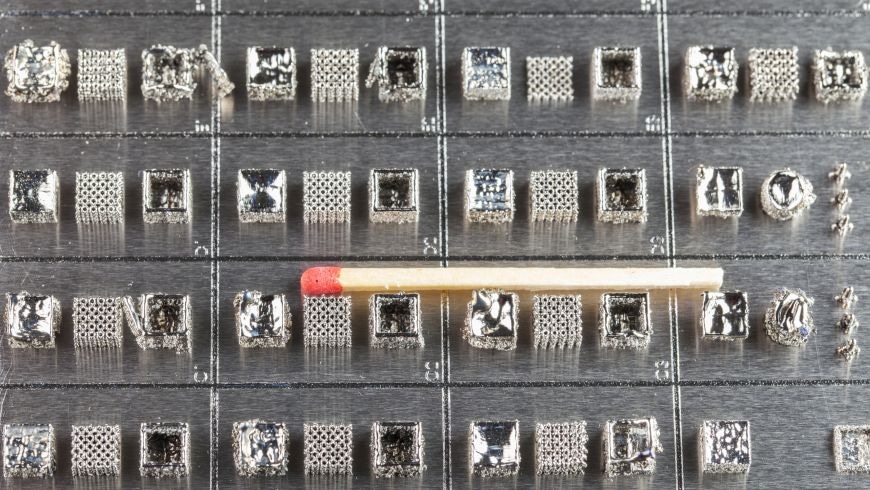Nov 16 2017
In the future, 3D laser melting process can be adopted for manufacturing innovative designer alloys used in aerospace applications — a process known as additive manufacturing, or AM.
Introductory research in this research area was carried out by Empa researcher Christoph Kenel, who is currently working at Northwestern University in Chicago. Empa has awarded him the Empa Research Award 2017.
 These small-sized samples are made of oxide dispersion-strengthened titanium aluminides and have been printed as part of a PhD thesis. CREDIT: Empa.
These small-sized samples are made of oxide dispersion-strengthened titanium aluminides and have been printed as part of a PhD thesis. CREDIT: Empa.
Titan-aluminum alloys have the features of greater strength, lower density and better oxidation resistance at very high temperatures. Hence they are of higher technical relevance, for instance, in aerospace engineering. The goal of Christoph Kenel’s awarded PhD thesis is to create an innovative titanium aluminide, TiAl, alloy that can be specifically used in beam-based additive manufacturing techniques, and to incorporate nano-sized oxide dispersoids to enhance their high-temperature mechanical characteristics. The study performed by Christoph Kenel was investigated by Christian Leinenbach from Empa’s Advanced Materials Processing laboratory.
The topic is very challenging because TiAl alloys are inherently brittle at room temperature, and the quick solidification conditions prevailing during AM can result in noticeable element segregation, a series of complicated phase transformations and cracking. Oxide dispersion strengthened, or ODS, alloys are a category of materials with unparalleled resistance to oxidation, creep, corrosion, deformation, and coarsening at temperatures of nearly 1000 °C.
Alloys not feasible by classical casting
Yet, the production of components with ODS alloys is at present hindered by acute technical and economic barriers. Traditional knowledge holds that classical powder metallurgy is the only propitious technique for developing ODS alloys from powders by adding oxides through ball milling in an entirely solid-state process — melting of these composite powders results in the loss of oxide dispersoids through one or a combination of processes such as coarsening, agglomeration into interdendritic space, dissolution, and floating to the surface of the ingot, or “slagging.” Hence, processing of ODS TiAl is a really challenging task.
Dr Kenel was determined to adopt an innovative process for creating a TiAl alloy particularly for the AM process. Usually, the parameters for the AM process are optimized for a specific material in a trial-and-error method, although it is a known fact that this method is not successful.
With regard to the oxide dispersoids, Kenel and his team proposed that laser-based AM can be successfully adopted to develop bulk samples from powders including oxide dispersoids because the extremely short melting time and very quick solidification will maintain better dispersion of the oxide dispersoids within the alloy grains.
In his research, Dr Kenel adopted computational techniques such as computational thermodynamics and finite element methods to simulate the phase transformations respectively in binary Ti-Al and ternary Ti-Al-Nb and Ti-Al-Mo alloys at the time of the very distinctive cooling and heating conditions of AM. Then, he created advanced and innovative experiments such as in situ synchrotron X-ray micro diffraction techniques during laser heating, enabling him to systematically analyze the phase and microstructure formation in chosen alloys under simulated and well-established AM conditions with an unmatched temporal resolution. This has not been done before.
The Research Award 2017 was granted on November 13th, 2017 on the occasion of the “PhD Day” at Empa. Christoph Kenel moved from Northwestern University in Chicago, where he has been performing studies from the start of 2017.